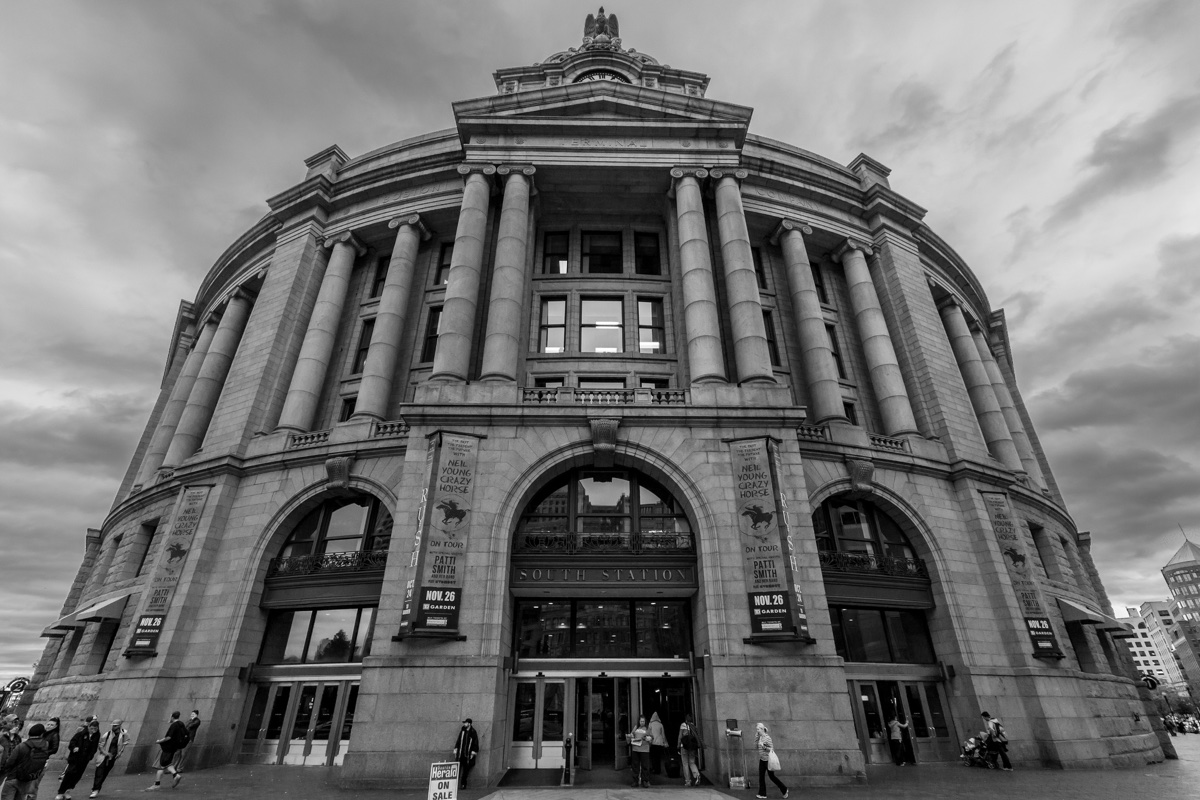North-South Rail Link Has Friends in High Places, But Will It Be Enough?

Photo by Tim Sackton on Flickr/Creative Commons
“Just remember what John Maynard Keynes said,” former Gov. Mike Dukakis instructs a room full of legislative aides and transportation wonks. Infrastructure has always suffered from a perceived lack of sex appeal, so it’s a curious choice to invoke the mustachioed paragon of an even drier topic—economics. “In the long run, we’re all dead. We need to move with all deliberate speed, folks.”
The Piemonte Room in the corner of City Hall’s fifth floor is abuzz with news that two more city councillors, Frank Baker and Ayanna Pressley, have thrown their support behind the North-South Rail Link, giving them a majority on the City Council. Dukakis and former Gov. Bill Weld have pitched the merits of the long-stalled projects to Gov. Charlie Baker and penned op-eds singing its praises in the Banker & Tradesman and Globe. Now, the NSRL Working Group is preparing its ground game.
“I think it’s safe to say we don’t have a working transportation system in Boston,” Ed Mueller tells the group. The MBTA is no stranger to hyperbole, but his point becomes clear with a slide showing the massive, brachial systems of subway, commuter rail, and Amtrak lines extending north and south of the city, and a stubborn, little gap at the center cleaving it in half.
The NSRL would connect North Station and South Station with a mile-long tunnel, allowing for easy movement across the region’s 138 stations and linking lines north of Boston to Amtrak’s Northeast Corridor, the busiest passenger rail line in the country. But with Boston’s building boom driving a labyrinth of pylons underground, the time for tunneling is waning.


Images courtesy Brad Bellows Architects
While state lawmakers approved a $2 million study to further examine the NSRL earlier this year, the Baker administration has made no secret it prefers the $1.6 billion South Station expansion (SSX) project, paired with reinvestment in the existing core system. Under the SSX proposal, New England’s second-largest transit hub would gain seven new tracks and relocate to the nearby parcel owned by the U.S. Postal Service along the Fort Point Channel—effectively killing the NSRL.
“While the Baker-Polito Administration is focused on improving service for the one million riders who rely on the MBTA’s core system every day by upgrading existing infrastructure, we appreciate the input of proponents as the Department of Transportation conducts a feasibility reassessment of the North and South Stations rail link,” said MassDOT spokesperson Jacquelyn Goddard in a statement.
“[Baker] doesn’t seem to be leading the charge. I think that’s safe to say,” says architect Brad Bellows, who has worked on the NSRL since the early ’90s. In an op-ed appearing in the fall 2016 issue of ArchitectureBoston, Bellows called the north-south split “our de facto Mason-Dixon Line.”
“Rail unification will benefit Boston, sparing it the waves of traffic it can otherwise expect, while spurring investment in our older industrial cities that were build around rail and faltered with its decline,” Bellows wrote. “The current real estate bubbles in Boston and Cambridge are a measure of our broken regional transportation system, which rewards the few places that are easily accessible and punishes the rest. This pattern is unjust and unsustainable.”
Citing a 2015 study by Harvard researchers that found commuting time to be the single most important factor in escaping poverty, Councillor Tito Jackson—a former student of Dukakis—said the NSRL could prove especially helpful for residents of neighborhoods like Mattapan, underserved by current transportation options. Congressman Seth Moulton’s office prepared a slide with “back of the envelope work” estimating the lost opportunity for development as a result of SSX around $10 billion.
“There really is a robust group of transportation enthusiasts, elected officials, and a lot of business leaders that really think the North-South Rail Link would bring Mass, especially greater Boston, to the next level of economic development,” says state Sen. Jamie Eldridge, an Acton Democrat who sent a cadre of aides to Monday’s meeting. “I commute into Boston most days. Most of my constituents take the train in. I think it would dramatically improve their quality of life if we rebuilt the North-South Rail Link.”
Of course, the specter of the Big Dig and its $24 billion legacy looms heavy on any conversation on the project. But Mueller and other NSRL backers are quick to note comparable projects elsewhere, like Zurich’s $2 billion Durchmesserlinie rail link, made possible by advanced tunneling technology. Whereas the the Big Dig was open-heart surgery, the Working Group sees the NSRL as a non-invasive procedure.
At the end of his presentation, Mueller acknowledges the irony of Dukakis championing a project that could be passed over for the expansion of the Governor Michael S. Dukakis Transportation Center at South Station. “I figured if my name was on the station, they wouldn’t expand it,” he shoots back.

